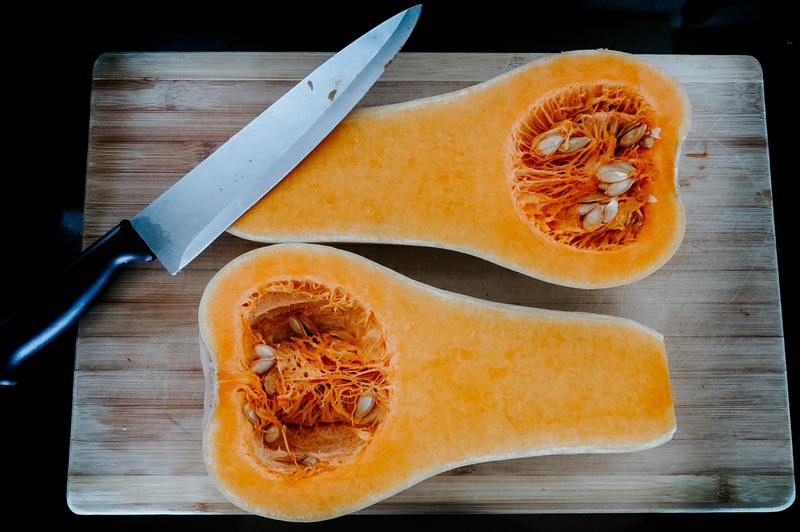It’s normal to be wary when you catch some spots of mildew on your squash. Knowing how to get rid of powdery mildew on squash would give you hope to save it and make it easier to deal with.
Continue reading so that you’ll understand what powdery mildew is and safely remove it from squashes.

What Is Powdery Mildew?
Powdery mildew is a kind of mildew that can grow in different types of plants. More commonly, it may appear on a plant’s leaf, but it can also occur in various parts such as the stem and flower.
As you can guess based on its name, this kind of mildew has a fine or powdery texture. It can appear as white or light gray spots and even be described as seemingly dusted by a white powder.
Are you still confused about how to identify powdery mildew? Then learn from this article about how to identify powdery mildew.
If you leave it be, it would immediately spread. More so, if the climate is warm, dry, and with high humidity, this mildew would continuously thrive.
It isn’t fatal to the plant, but it can still rob your plant’s nutrients and water. It can cause plants to become weaker and grow slower.
During its last stages of growth, powdery mildew can turn a leaf yellow and flaky. It can cause the plant to have weaker resistance to other pests.
If you’re interested in knowing more about powdery mildew, then visit this article named how to get rid of powdery mildew.
How To Treat Powdery Mildew On Squash
Sometimes it’s just inevitable that your squash leaves might get infected by powdery mildew. No matter how thorough you are in preventing mildew, the wind can still carry it to take root on your plant unknowingly.
Here are a few products you can use to treat powdery mildew on your squash:
Method #1. Baking soda
Prepare a spray bottle, warm water, baking soda, dish soap, and cooking oil.
First, pour warm water on a spray bottle, add a teaspoon of dish soap. Then shake the bottle for a few seconds.
Next, add a tablespoon of baking soda and a tablespoon of cooking oil. Shake the bottle to combine and mix the contents well.
Spray the solution to the affected parts of plants, don’t overspray, just enough to coat it thinly. Finally, let it dry, then you’re done.
Method #2. Neem oil
You’ll need to prepare a spray bottle, warm water, dish soap, and neem oil for this method.
Start by filling the spray bottle with warm water. Add one teaspoon of dish soap before shaking the bottle to mix the solution thoroughly.
Then, add neem oil to the solution. Again, shake the bottle to combine all the ingredients.
Apply this solution directly to the parts affected by powdery mildew and leave it to dry by itself. You can also use this to prevent powdery mildew; you’ll have to reapply it every 14 days.
Method #3. Milk
This method would only require preparing a bowl, spray bottle, warm water, and milk.
Begin mixing 6 cups of water and 4 cups of milk in a bowl; you can alter the measurement based on how much you will use. Then pour some of the solutions into the spray bottle.
You can then start to sprinkle the solution on the affected parts of your squash. Please leave it to dry, and then you’re done.
To know more treatment methods for other kinds of plants infected by powdery mildew, visit this detailed article about how to treat powdery mildew using homemade and organic remedies.
Prevention Of Mildew
With a few pieces of advice to keep in mind, you can keep your plants from growing powdery mildew or keep them from regrowing that. Here is a compiled easy to manage tasks you can apply to your daily plant care with ease:
- Choose to plant those that are resistant to powdery mildew.
- Don’t overcrowd your plants. Make sure that there would still be good air circulation.
- Either choose your permanent planting area where it could get proper sunlight, or choose an appropriate time in the day where you can let your sun soak the sunlight for a few hours per day.
- Never forget to prune dead leaves.
- Do not over-fertilize your plants.
- Have a set time of watering plants, and keep in mind not to over-water them.
- Choose organic fungicide to use on your plant. This product can also help prevent mildew and treat those existing ones.
- Immediately dispose of any plant that was previously infected by powdery mildew.
- Invest in potassium bicarbonate. To know more about this, visit this detailed article about where to buy potassium bicarbonate for powdery mildew; it is mentioned what it is, where to buy it, and how to use it.
Conclusion
Don’t immediately lose hope if you’re facing a squash infected by powdery mildew. With so many options on what method to use, indeed you’ll find which were the most effective for you.
After learning your options on how to get rid of powdery mildew on squash, it’s time to take action. It’s best to treat this powdery mildew while it’s early, so don’t hesitate or worry too much.
